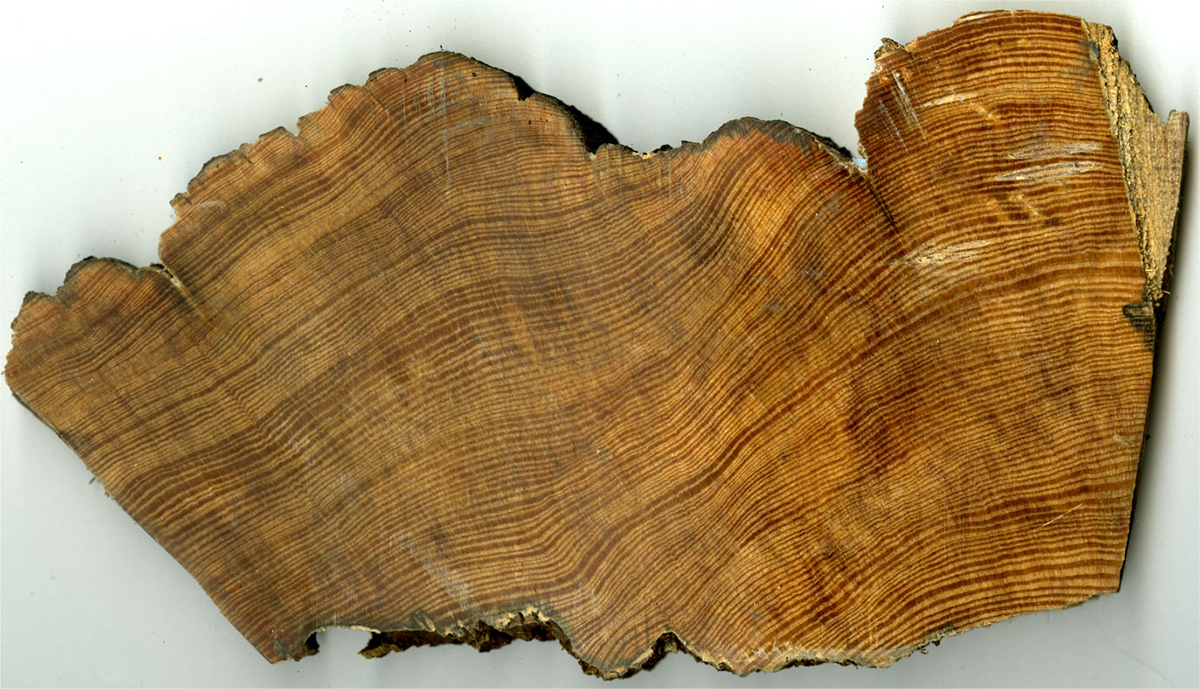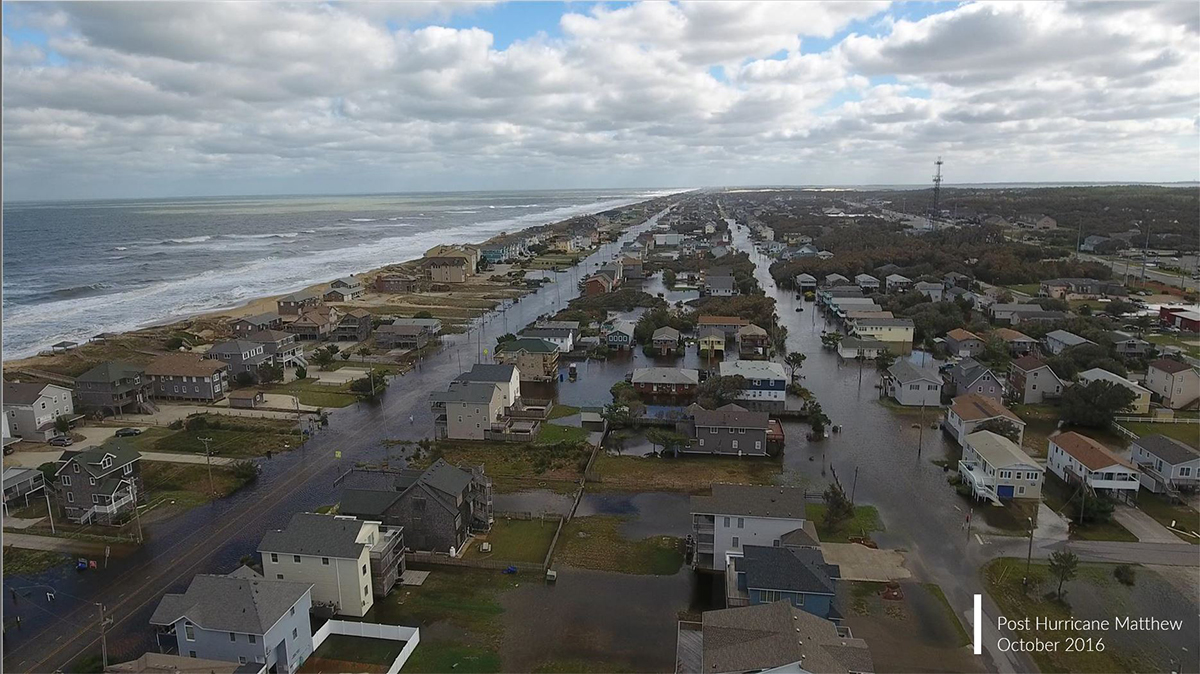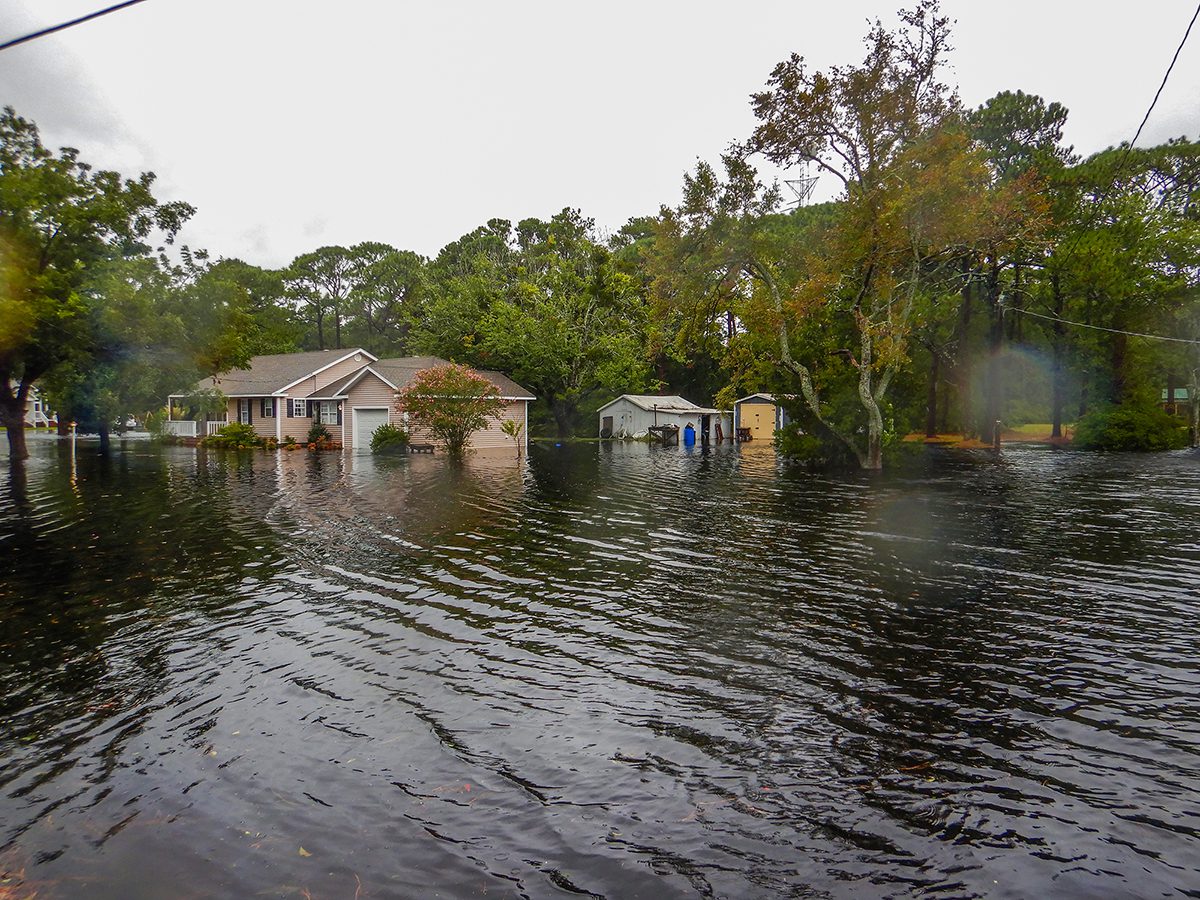
“We’re in uncharted territory here,” Maxwell realized as he looked at the peaks in his data.
Dr. Justin T. Maxwell is an associate professor of geography at Indiana University, where he researches paleoclimatology, the study of the Earth’s past climates. Most recently, he explored the historical relationship between longleaf pines and tropical cyclone precipitation. Maxwell reconstructed North Carolina and South Carolina seasonal extreme rainfall totals as far back as 1700 by sampling tree rings from the Carolinas’ coastal plains.
Sponsor Spotlight
In a rare instance when the graphical expression of data looks like real life, the charts of Maxwell’s reconstructed storms resemble the very trees from whence they came. A cluster of tall, skinny peaks rises on the right side of the graph, grouped like a stand of longleaf pines.
Each peak represents the rainfall from a single storm season. The wetter the season, the taller the peak.
Maxwell discovered a trend amid the forest of peaks and squiggly lines: Hurricane rainfall is increasing over time because storms are moving more slowly.

“Normally what we find is, ‘Hey, you think this drought was bad? Well, there was one in the past that was way worse,'” Maxwell said. Instead, his reconstructions told another story. “I don’t usually see all the big peaks at the more recent part. I wasn’t expecting that.”
Sponsor Spotlight
The project took root in 2012. Maxwell and two former advisers, Dr. Paul A. Knapp and Dr. Peter T. Soulé, professors at the University of North Carolina Greensboro and Appalachian State University, respectively, started coring longleaf pine trees along the sandy ridges of Carolina bays, those elliptical lakes, ponds and depressions that dot much of the Eastern Seaboard.
To core a tree, scientists screw a borer, which resembles a cross between a hole saw and a lug wrench, into the trunk. When they remove the borer, the resulting core looks like a striped wooden dowel.

They collected samples at seven sites in North Carolina and South Carolina. In an earlier study, Maxwell determined that longleaf “latewood” — a sub-band within the tree ring that develops from late spring to early fall — responded to extreme flooding events.
“Tree rings can tell you a lot about different aspects of climate,” Maxwell said. “Whether that’s rainfall, soil moisture or temperature. It’s all about targeting the sites where trees are going to be sensitive to that variable.”
The conditions under which a tree grows determine what scientists can learn from it.
“Let’s say you go into an alpine region where it’s quite cold,” said Maxwell. “Those trees grow when it gets warm.”
Those trees provide scientists with annual data: a yearly temperature report that begins when the tree sprouts and ends when it dies.
Maxwell’s longleaf pines grow at low elevations along sandy ridges. Pocosins, or wetland bogs, border these ridges and have staved off loggers that might have otherwise clear cut these savannas.

Water drains quickly in the savanna. Longleaf pines possess shallow, expansive root systems that grow just above the water table. Extreme rainfall raises the water table enough for the pines to drink from it, producing significant latewood growth.
“The ring records all the rainfall for that season,” said Maxwell. “These trees happen to be really sensitive to hurricane rainfall, but it could have been from multiple storms in a given year.”
The National Oceanic and Atmospheric Administration collects hurricane rainfall data, but their instrumental data only extend to 1948. NOAA data from 1948-2018 allowed Maxwell to calibrate his model. Once he saw that his peaks matched what NOAA’s instruments recorded, he could estimate seasonal storm rainfall back to 1700.
Further manipulation of the NOAA data revealed a strong relationship between hurricane speed and precipitation. Maxwell’s reconstructed rain totals “extend the record” and provide evidence that hurricane slowdown is a trend rather than a fluke.
“There was a bald cypress in North Carolina that was found to be over 2,000 years old,” Maxwell said. The oldest rings in the study originated from the stump of a longleaf pine that sprouted in 1636. North Carolina loggers likely felled the tree for turpentine to build ships. “If you have some of these really old trees, you can go really far back in time.”
A mystery storm and ‘detective work’
In his study, only two historic peaks rivaled the hurricane rainfall recorded in the last 30 years. Maxwell found storm research that might explain the 1703 rainfall event, but the cause of the 1741 peak remained elusive.
Dr. Cary J. Mock, a professor of geography at the University of South Carolina, offered two explanations for Maxwell’s 1741 mystery storms. Mock reconstructs extreme weather events from historical documents such as ship logs, diaries, early instrumental records and old newspapers.
“You need to utilize historical and genealogy skills to find the documents,” said Mock, “Like detective work.”
Mock proposed two storms that could explain the 1741 peak in Maxwell’s data, an August tropical storm and a September hurricane that traveled from North Carolina to New England.
“A South Carolina newspaper account mentioned the August storm as bringing heavy rains to North Carolina,” said Mock. Perhaps these heavy rains had soaked Maxwell’s longleaf pines nearly 300 years ago.
Maxwell and his team are far from the only researchers investigating this trend in tropical cyclone precipitation.
Dr. Hans Paerl and Dr. Nathan Hall, are a professor and research professor, respectively, from UNC’s Institute of Marine Sciences in Morehead City. In their 2019 study, they used rainfall data from the United States Geological Survey to measure tropical cyclone precipitation since 1898. While Maxwell created reconstructions based on tree ring samples, Paerl and Hall relied on rain gauge measurements taken along the North Carolina coast.
“It’s nice when you see people validating what you did,” said Hall.
Paerl and Hall reached a complementary conclusion based on observational data: Hurricane rainfall has been increasing drastically since the 1990s.
More extreme rainfall exacerbates many of the stressors that impact the coastal ecosystem. Runoff from as far inland as Raleigh floods estuaries with excess nutrients, which algae love.
“If the density of algal blooms increased enough, they would decrease the transparency of the system,” said Paerl, “You might even see seagrasses disappear because there wouldn’t be enough light available to support their growth.”
“Seagrasses are very dependent on adequate light,” said Paerl. And Carolina fishers depend on seagrass. Several commercially and recreationally important fish species inhabit the seagrass meadows at some point in their life cycle, including red drum, spot and shrimp.
Changing landscapes
As cities expand, the landscape loses its natural ability to drain. Slower-moving hurricanes and the resulting extreme rainfall stress city drainage systems, causing flash floods.
Both hurricanes Matthew and Irene hit the town of Nags Head hard. Hurricane Matthew delivered 12 inches of water in four and a half hours in the north end of town.

“There was one area right around the northernmost outfall that was around 3½ feet deep,” said David Ryan, the town engineer for Nags Head. Ryan said that the water remained “upwards of 48 to 72 hours” before draining.
Holly White, the principal planner for Nags Head, said that elevated groundwater levels exacerbate shallow flooding, likening the soil to “a full sponge.” When the groundwater levels rise, the soil cannot absorb more stormwater. Sea level rise, extreme rainfall events and increased urbanization contribute to Nags Head’s oversaturated sponge.
“As development increases, we bring in water from off the island into our system,” said Kate Jones, Nags Head’s senior environmental planner. “People use that in their homes and in their irrigation.”
The town built two groundwater lowering systems that wring out the soil in preparation for incoming storms. Other solutions the city is pursuing include permeable concrete to drain surface water, incentivizing tree planting and installing new drainage pipes.
Still, White wonders if coastal communities are doing enough. The biggest barrier the town faces is funding projects to prepare for future conditions. Nags Head partnered with North Carolina Sea Grant, a federal outreach program that provides resources to coastal communities, but their staff still faces many hurdles.” Nags Head partnered with North Carolina Sea Grant, which provides resources to coastal communities, but the staff still faces numerous hurdles.
“How do you eat the elephant? One bite at a time,” said White.







